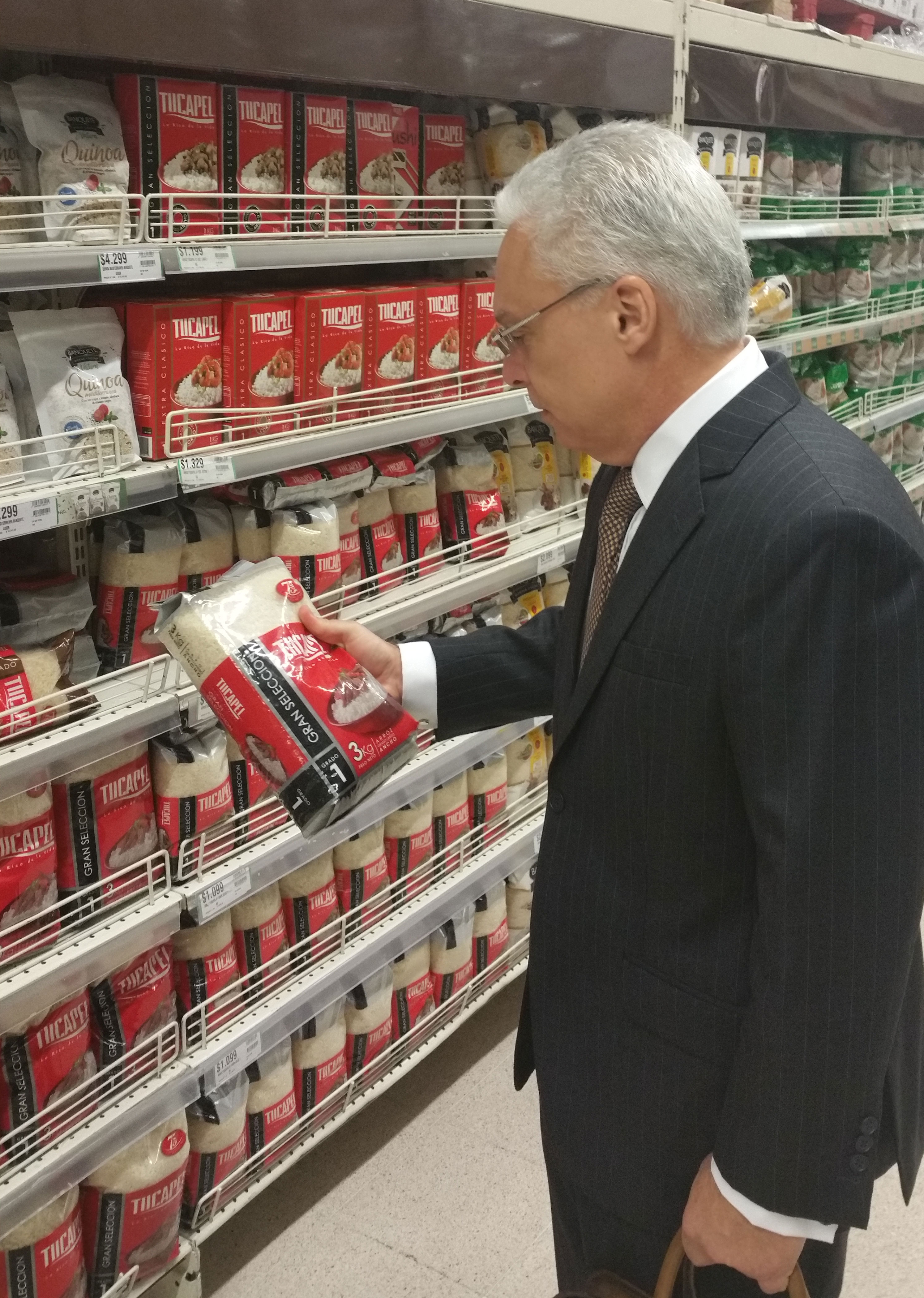 ADM International Marketing Director Jorge Rodriguez shops the competition in Chile
ADM International Marketing Director Jorge Rodriguez shops the competition in Chile
Mar 18, 2016
SANTIAGO, CHILE – Agriculture Secretary Vilsack has brought his trade mission to Chile, the wealthiest country in South America and the most prolific negotiator of free trade agreements.
“Chile is classified as a ‘high-income’ country by the World Bank and has a per capita GDP of $22,346,” explained USA Rice Vice President of International Promotion Jim Guinn, who is participating in the trade mission. “It’s an impressive economy that has really turned around. In 1990 the poverty rate was 40 percent, today it is 7 percent.”
This year however, Guinn says the economic growth rate is projected at 2.2 percent, due principally to low commodity prices, especially copper, which makes up about 50 percent of Chile’s exports by value.
Chile has entered into 23 trade agreements covering 60 countries, including those in the newly negotiated Trans Pacific Partnership (TPP). The U.S.-Chile Free Trade Agreement came into force in 2004 and as a result, bilateral trade between the two countries quadrupled in the first eight years of the agreement. In 2014 total U.S. exports reached $16.5 billion, a $7 billion trade surplus for the United States, although U.S. rice exports have held low and steady for the past five years.
Unlike Peru, Chile is not a huge consumer of rice. Their 17.6 million citizens consume about 29 pounds of rice annually per capita, or 231,000 MT.
Approximately 50-60 percent of that is imported, with the lion’s share going to Argentina (35 percent), Paraguay (25 percent), and Uruguay (13 percent). In 2015, U.S. exports, which were mainly medium grain, were 2,200 MT or about 1.5 percent of total rice imports.
Guinn says 10-15 percent of the market is parboiled rice, a majority of the domestic crop is long grain, and after touring a local supermarket here, he surmised that most of the rice imports also are long grain.
“In my opinion, the opportunities for U.S. rice here will be in small quantities and likely limited to U.S. medium grain or specialty rices,” Guinn said. “The geographic proximity of competing suppliers of long grain rice in MERCOSUR, whose prices are significantly lower than U.S. prices, and the strength of the U.S. dollar, create considerable challenges for significant gains in this market. However, I have additional meetings with the trade here before heading home that may provide additional perspective on the opportunities for U.S. rice here in Chile.”